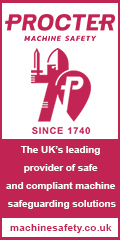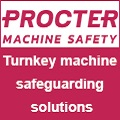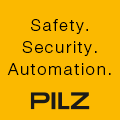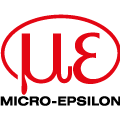
Posted to News on 29th Sep 2011, 14:25
What to do when EN ISO 13849-1 replaces EN 954-1
Robin Carver, a qualified Safety Systems Engineer and a Safety Practitioner, provides some practical advice for machine builders who are not yet ready for the replacement of EN 954-1 by EN ISO 13849-1 on 31 December 2011.
EN ISO 13849-1, Safety of Machinery - Safety related parts of control systems - Part 1: General principles for design replaces EN 954-1 on 31 December 2011. In the light of this, some 'safety experts' are telling machine designers, manufacturers and importers, for example:
"Deadline to Meet EC Safety Standards - Machine builders must meet the new standards, EN ISO 13849-1..."
"After [31 December 2011] you cannot sell or take a machine into operation unless it is verified that it has the required 'Performance Level'..."
Do these statements mean that machines need to be redesigned? Light curtains need to be used instead of guards? A Notified Body needs to verify the compliance of all safety systems? Machine users need to modify existing machines?
First, some facts
On 1 January 2012 the European Machinery Directive 2006/42/EC will no longer allow the use of EN 954-1:1996 to demonstrate conformity.
Article 2 of the Machinery Directive, Definitions, states that a "'harmonised standard' means a non-binding technical specification adopted by a standardisation body."
Compliance with harmonised standards provides a presumption of conformity to the corresponding essential health and safety requirements of the EU 'New Approach' Directives but, clearly, compliance with harmonised standards remains voluntary, and manufacturers are free to choose any other technical solution that provides compliance with the EHSRs.
New Approach directives, such as the Machinery Directive and LVD, are based on the following principles:
- Only products fulfilling the essential requirements may be placed on the market and put into service.
- Harmonised standards, the reference numbers of which have been published in the Official Journal, are presumed to conform to the corresponding essential requirements.
- Application of harmonised standards or other technical specifications remains voluntary, and manufacturers are free to choose any technical solution that provides compliance with the essential requirements.
Over the last 15 years, EN 954-1 successfully helped machine designers and suppliers, OEMs, systems integrators and end users understand hazard categories and the importance of mitigating risks to acceptable levels; it was not perfect but it did make a valuable contribution to improving overall safety. However, during that time, machine suppliers introduced machines including many new safety-related products and systems, generally electromechanical but with increasingly more complex electronic and software based designs that carry new sources of possible failure and potential risks. EN ISO 13849-1 was developed to accommodate these. The principles of system architecture introduced by EN 954-1 (the Category) remain in EN ISO 13849-1, in the most part unchanged, and still play a very significant role. New to the requirement is the quantification of reliability to allow the application of 'black box' technology as opposed to the simple the 'open architecture' associated with electromechanical devices. EN ISO 13849-1 is good in parts but, like it or not, it is here to stay - at least until 2018 when the plan is to merge it with EN 62061.
What to do next?
There is probably nothing machine builders need to do other than delete any reference to EN 954-1 in the machine's EU Declaration. If designers want to check the compliance of safety-related control systems to EN ISO 13849-1 then a formal compliance verification can be undertaken. Seek advice from a competent person - which may not be the component supplier, who may have more interest in selling his latest products than giving the best advice! Instead, talk to an independent professional who is listed on the Occupational Safety & Health Consultants Register (OSHCR) as offering sensible and proportionate advice on machinery safety. In addition or an an alternative, machine builders could undertaken appropriate training and become self-sufficient in these important aspects of machinery safety.
For more information about CE marking to the Machinery Directive 2006/42/42/EC, designing safety-related control systems or training in machinery safety, visit the website for Robin Carver's company Health & Safety Compliance Engineering.
Want the latest machine building news straight to your inbox? Become a MachineBuilding member for free today >>
Health & Safety Compliance Engineering
17 Bramley Drive
Hollywood
B47 5RD
UNITED KINGDOM
+44 (0)7860 231 287

















